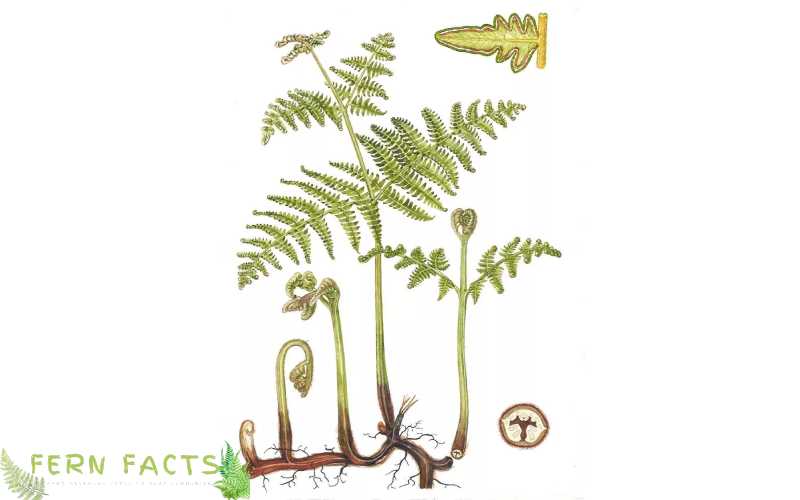Are Ferns Invasive?
Do you have that curiosity about whether are ferns invasive or not because of ferns spreading characteristics? Well, ferns are not that invasive.
Maximum species of ferns do not widen or spread far beyond their planted areas. However, only a few ferns have broken all the records of being extremely invasive during their growing periods.
In this article, I’m going to discuss whether the fern plants are invasive or not while forecasting their comprehensive knowledge of the invasive nature of some fern plants.
Besides, I will also give you some ideas to manage and control all these plants in your garden if you wish. So, let’s explore the journey of invasive fern plants.
Understanding the Invasive Nature of Some Ferns
Invasive fern means ferns tend to spread or grow very quickly and widely after being planted. These types of plants generally cover the whole area or contain maximum spaces in the garden while spreading themselves invasively.
Similarly, their excessive growth can maintain the ecological balance of that area. Most ferns are easily slow-growing ferns apart from two ferns that have fast-growing characteristics with aggressive spreading habits.
Invasive Ferns
Let’s see those two ferns that have high spreading growth. And so, because of their high spreading growth, they are identified as invasive ferns.

Common Bracken
- Botanical name: Pteridium aquilinum
- Plants: Deciduous plants
- Region: Eurasia, North America
- Habitats: coniferous woodlands
- Shade requirements: partial or full sun
- Height: around 1 meter
- Soil: acid, neutral or alkaline, moist well drained
Common bracken is one of the fern plants that has high excessive spreading habits in European countries which sometimes lead to toxicity to people and for the forest itself.
Similarly, these fern spores are also identified as harmful or dangerous for people and can even cause cancer. These ferns are very dangerous to cattle, sheep, or horses if they mistakenly consume or eat them.
Even these ferns can cause stomach cancer in humans or any other living things in the world. However, in ancient times, Japanese and Koreans used to eat these fern shoots and before eating these shoots they soaked it in water all night.
However, it is still not recommended by most countries because of highlighting its negative side.

Hay-scented Fern
- Botanical name: Dennstaedtia punctilobula
- Plants: Deciduous plants
- Regions: eastern North America, Newfoundland, Wisconsin, Arkansas
- Habitats: woods or open woods
- Shade requirements: full or partial shade
- Height: around 1 meter
- Soil: acid or neutral, moisture, well-drained, adaptable with dry soil
Hay-scented fern is another common fern that is invasive after being planted. Mostly, this fern is common in the United States. But these ferns are not that objectionable or unpleasant like bracken plants.
These ferns also are not poisonous like bracken plants. These hay-scented plants give nice fresh smells or aromas after being cut, resembling freshly cut grass.
Their names are given because of these characteristics. These ferns are very useful for covering large areas in gardens or parks although it needs to be managed very carefully.
Otherwise, it will not take time to spread in the whole yard of your place or garden if it’s not properly managed.
Managing and Controlling Invasive Plants
One of the key core of these plants is to manage these plants thoroughly. In the absence of being properly managed and monitored, these plants’ growth will be immensely broader which will be harder for you sometimes to control.
Therefore you need to carefully manage these plants.
However, if you want to plant these ferns in your garden, you can plant them with precautions. Besides, if your garden space is wide enough then you can plant these invasive ferns in your garden as this will be good green ground covered for your garden.
But if your garden is not spacious enough, then it will be more tricky and hassle for you to manage them.
Still, you can plant them in a limited amount and maintain their quantity while pulling out the extra elements that you want to eradicate from your garden.
But make sure while pulling out these plants, you need to wear gloves because their fibers can be tough enough for you to pull out. And so, they also have some toxic elements therefore you need to wear gloves.
Though hay-scented ferns are not toxic like bracken ferns, still it would be better to wear gloves to save yourselves from any kind of injuries. Alternatively, you can use weedkiller when these ferns mature then you easily rip them off without much struggle.
My Personal Struggles and Strategies to Maintain Invasive Plants
By sharing my encounter with these invasive plants to acknowledge the difficulties with you, so that you can understand the problems beforehand. Being a new gardener, I had once brought an invasive plant for my mini garden and I planted it in a pot.
But, day by day, the plants became bigger and bigger and the container couldn’t handle it anymore. Even the balcony was also filled with these excessive spores and managed to grow by itself. In such a case, I replant the plant in the backyard of my home and maintain these plants’ rhizome growth daily.
I need to monitor these plants every week and also pull out any excessive plants that go beyond their territories. Similarly, I sometimes cut down the extra parts of these plants so that their growth can be under control. By pruning them you can also maintain their excessive growth.
You can also pull out their spores before growing on the ground. Besides, you can also use natural chemicals like vinegar, and liquid soap altogether and make it a weed killer.
After that, you can spray this on the roots, and fronds of those ferns that you want to eradicate. It will kill those ferns naturally and maintain their growth. As well.
Final Thought
To sum up all the points, ferns are not that much invasive. However, two ferns common bracken and hay-scented fern are the exceptional ones that have immense spreading growth after being planted.
These ferns have the adaptable quality by spreading themselves from spores individually and their growth is also pretty fast compared to other slow-growth ferns.
Nonetheless, by properly managing and controlling remedies, you can prevent these ferns from growing. Besides regular monitoring, pruning, and chemical or natural weed killer you can control these plants’ growth in your garden.







